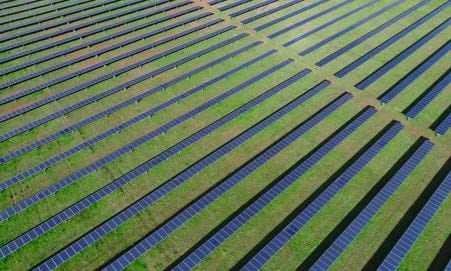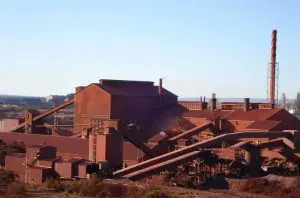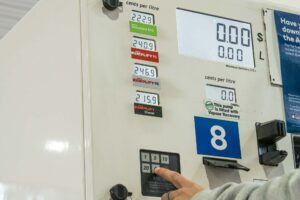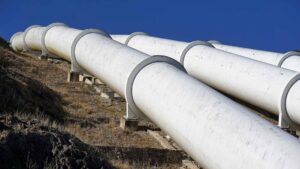
Australia’s ineluctable switch to solar power is gathering speed, with another two large scale solar farms switched on in New South Wales in the last few weeks, and another dozen due to connect in NSW and Queensland in coming months.
The 55MW Parkes solar farm and the 30MW Griffith solar farm started production at full capacity in the last couple of weeks, with the 25MW Dubbo solar farm also connected and expected to begin generation soon.
All three projects are owned by French renewable energy developer Neoen, the owners of the Tesla big battery (also known as the Hornsdale Power Reserve), and 309MW Hornsdale wind farm, and the Bulgana renewables hub that has begun construction in Victoria.
 The addition of the Parkes and Griffith solar farms extends – at least for the time being – the NSW state’s leadership in large scale solar. (Graphs courtesy of Climate Energy College).
The addition of the Parkes and Griffith solar farms extends – at least for the time being – the NSW state’s leadership in large scale solar. (Graphs courtesy of Climate Energy College).
But that status will soon be challenged by Queensland, which has nearly 2GW of large-scale solar under construction or committed, and also by South Australia and Victoria, both of which have several large-scale projects under construction.
Indeed, Australia will have more than 2GW of large-scale solar in production by the coming summer, a shift that is likely to change the shape of the wholesale pricing curve, sometimes pushing minimum pricing from night-time to the mid-day hours.
Bloomberg New Energy Finance estimates that Australia will have nearly 4GW of large-scale solar capacity by 2020, although it expects the country will add little more under current and proposed policy settings and emissions reduction targets.
However, if a reduction target of 45 per cent was set by 2030 – as recommended by the Climate Change Authority, and the bare minimum targeted by Labor – then large-scale solar could top 11GW by 2030, adding to the 19GW of rooftop solar expected by then (7GW now).
“The continued influx of rooftop PV and addition of gigawatts of large-scale PV from the RET is going to put substantial downward pressure on midday wholesale electricity prices,” says Kobad Bhavnagri, the head analyst of BNEF in Australia.
“In the next decade the solar noon will become the cheapest part of the price curve.”
Given a policy environment that matches the Paris climate commitments, BNEF expects that by 2040, the combination of large-scale and rooftop solar will account for more than half of Australia’s installed capacity.
NSW already boasts the 102MW Nyngan and 53MW Broken Hill solar farms, and 57MW Moree solar farm, along with the newly completed Gullen Range solar farm and a collection of smaller installations around the ACT, including Royalla, Mugga Lane, and Williamsdale.
But the status of NSW as the leading solar producer will soon be challenged as a stream of new projects connects to the grid in Queensland, including the 116MW solar farm being built for zinc refiner Sun Metals and the 116MW Ross River solar farm.
Already completed in Queensland are the 50MW Kidston solar farm, the 20MW Barcaldine solar farm, the 11W Dunblane solar farm, the 10MW Lakeland solar and storage facility and the 15MW Valdora solar farm.
Other projects soon to be completed include the 112MW Darling Downs solar farm, the 15MW Longreach solar farm, the Whitsunday and Hamilton solar farms (both 57.5MW), and the Collinsville solar farm 41MW – all under the ARENA large scale solar program.
All told, there is more than 1,800MW of large scale solar under construction in Queensland, which will add to the 2GW of rooftop solar installed across the state by homes and businesses.
Other solar farms under construction in NSW include the 20MW White Rock solar farm and the 41MW Manildra solar farm, although there are many large projects about to begin construction or waiting for financial settlement.
Update: The size of the Ross River solar farm has been updated to 116MW, not 142MW as initially reported.
Note: The Australian large scale solar market is experiencing unprecedented growth. But it won’t stop now. Large Scale Lookout – compiled by SunWiz and RenewEconomy – provides an insider view of Australia’s large-scale solar market.
To enquire about ordering your copy of Large Scale Lookout, email [email protected]









